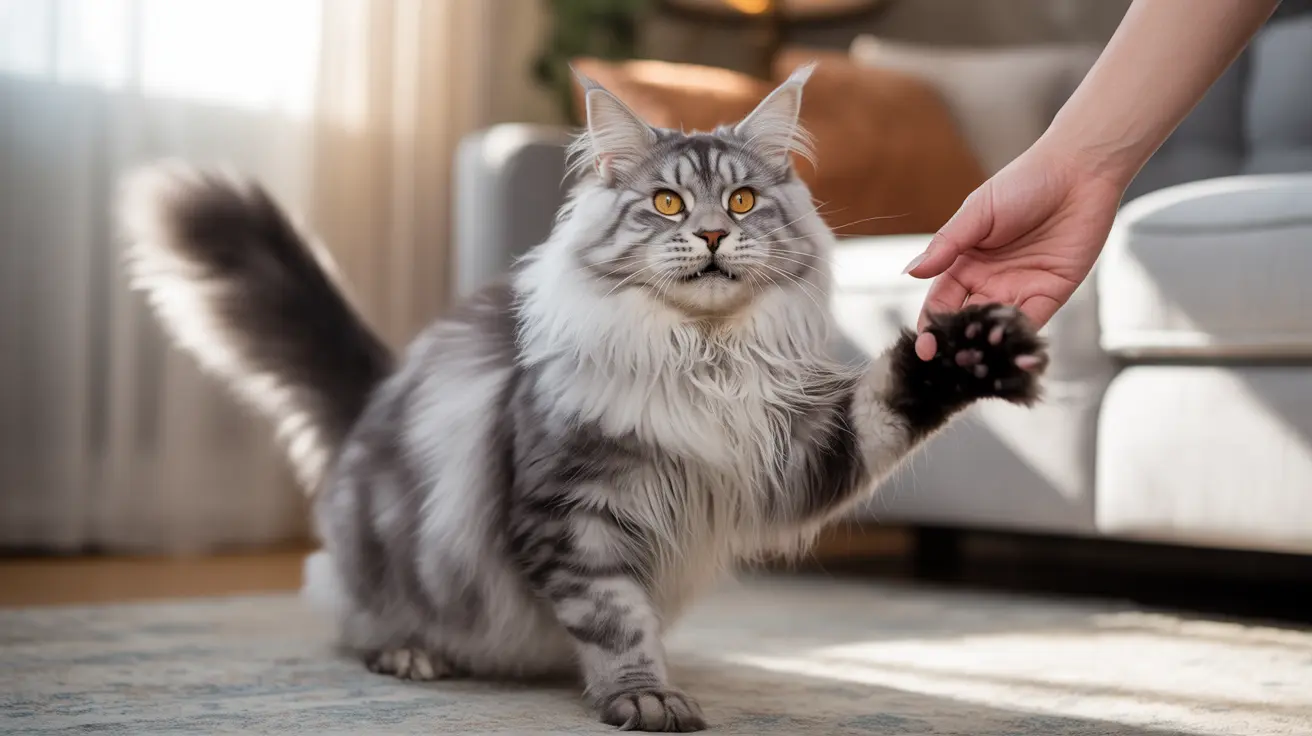Understanding Petting-Induced Aggression in Cats
Cats have complex social boundaries that differ significantly from other pets. While they can be affectionate, most cats have specific limits on how much physical contact they can tolerate before becoming overstimulated. This threshold varies among individual cats and can be influenced by numerous factors, including their early socialization experiences and overall temperament.
When a cat reaches its stimulation threshold, it may quickly shift from enjoying pets to displaying aggressive behavior. This isn't necessarily a sign of anger or meanness – it's often a natural response to feeling overwhelmed.
Reading Your Cat's Warning Signs
Most cats give clear signals before attacking, though these can be subtle and easy to miss. Learning to recognize these warning signs is essential for preventing aggressive episodes:
- Tail twitching or lashing
- Skin rippling along the back
- Flattened or rotating ears
- Dilated pupils
- Tensing muscles
- Low growling or hissing
Common Triggers for Hand Attacks
Several factors can trigger a cat to attack your hand during petting:
Physical Discomfort
Underlying health issues like arthritis, dental problems, or skin conditions can make your cat more sensitive to touch. What might seem like gentle petting to you could be causing discomfort or pain.
Overstimulation
Repeated stroking in the same area can become irritating for cats, similar to how a repeated touch might eventually become annoying to humans. Some cats are particularly sensitive to this type of stimulation.
Control and Territory
Cats are naturally territorial animals and may use aggressive behavior to maintain control over their personal space and social interactions. Some cats attack simply to communicate that they've had enough attention.
Prevention and Management Strategies
To prevent your cat from attacking your hand, consider these effective strategies:
Respect Boundaries
- Keep petting sessions brief
- Watch for warning signs
- Allow your cat to initiate and end interactions
- Avoid touching sensitive areas like the belly
Positive Reinforcement
Reward calm behavior during petting with treats or praise. This helps create positive associations with gentle handling and can gradually increase your cat's tolerance for physical contact.
Environmental Enrichment
Provide plenty of mental and physical stimulation through play, scratching posts, and climbing spaces. A well-exercised cat is often more relaxed and less likely to display aggressive behavior.
Frequently Asked Questions
Why does my cat suddenly bite my hand during petting even if it seemed to enjoy it before?
This sudden change typically occurs when your cat reaches its stimulation threshold. What started as pleasant petting becomes overwhelming, triggering a defensive response. Each cat has its unique tolerance level for physical contact.
What are the common warning signs that my cat is getting overstimulated while I pet it?
Watch for tail twitching, skin rippling, flattened ears, dilated pupils, and muscle tension. These signs indicate your cat is approaching its stimulation threshold and may soon react aggressively.
How can I prevent my cat from attacking my hand when I pet it?
Keep petting sessions short, watch for warning signs, and respect your cat's boundaries. Let your cat initiate contact and stop petting before they become overstimulated. Focus on areas they enjoy being touched and avoid sensitive spots.
Can health problems cause my cat to bite or scratch when touched?
Yes, underlying health issues like arthritis, dental disease, or skin conditions can make your cat more sensitive to touch and more likely to react aggressively. If your cat's behavior changes suddenly, consult a veterinarian.
How does a cat's past socialization affect its likelihood of petting-induced aggression?
Cats who weren't properly socialized as kittens or had negative handling experiences may be more prone to petting-induced aggression. Early positive experiences with human touch help cats develop better tolerance for handling.
Final Thoughts
While it can be frustrating when your cat attacks your hand during petting, understanding and respecting your cat's boundaries will help prevent these incidents. Remember that each cat is unique, and what works for one may not work for another. With patience and consistent application of these strategies, you can build a stronger, more trusting relationship with your feline friend.






